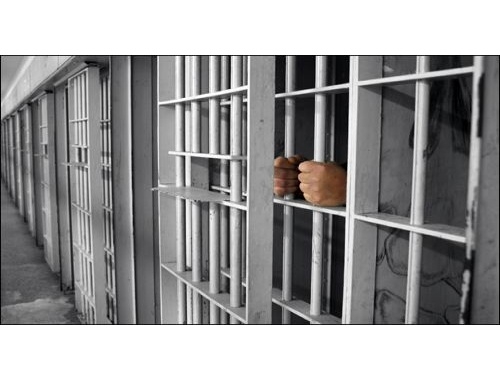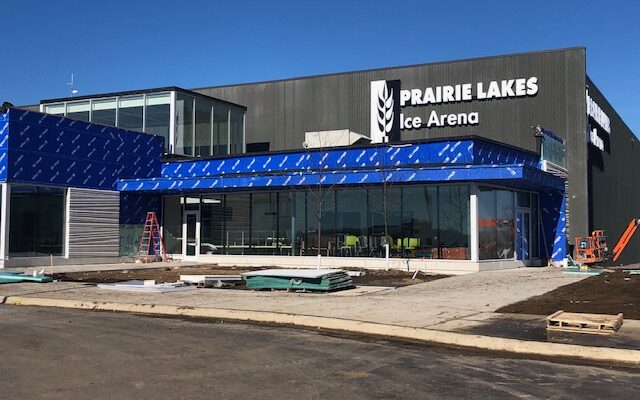South Dakota budget committee endorses $400 million for new prisons

February 23, 2023
PIERRE, S.D.–Lawmakers on the Joint Appropriations Committee unanimously approved funding Wednesday for two new prisons in South Dakota.
The first is a new women’s prison for Rapid City, a 300-bed facility that would become the second female prison in the state.
The Department of Corrections spent $20 million on land for the prison on the eastern edge of Rapid City last year. House Bill 1016 would allocate another $60 million for design and construction, with an anticipated opening date in the fall of 2024.
The second prisons bill, HB 1017, would allow the DOC to spend $342 million for a facility to replace the 140-year-old state penitentiary in Sioux Falls. No site has been chosen for the new men’s facility.
John Hult of South Dakota Searchlight (https://southdakotasearchlight.com) reports the money for the projects is a mix of budget reserves and general fund dollars. Each bill authorizes the transfer of money into the incarceration construction fund.
Each project would ease overcrowding for the state’s prison system, according to DOC Secretary Kellie Wasko. The women’s prison is overflowing, with more than 500 inmates spread out across a Pierre campus designed to house far fewer – even with an expanded footprint. The DOC acquired a building from the Division of Criminal Investigation in 2014 to expand its capacity by 140 beds, but Wasko said that building is “not structurally sound nor safe.” That building would no longer be used once the Rapid City facility is complete, she said.
The situation is less dire on the men’s side, but the facilities house 488 more men than American Correctional Association guidelines recommend. Only the Jameson Annex, a maximum security building on the penitentiary campus in Sioux Falls, is below the recommended capacity.
“This is a very well planned initiative to address our overcrowding,” Wasko told appropriators during a hearing at the Capitol in Pierre.
Safety issues and maintenance costs are also a major concern on the men’s side. The penitentiary in Sioux Falls is a multi-level building with a linear design that makes monitoring difficult. Cells designed for one inmate hold two, Wasko said, and the 32- to 36-inch-wide catwalks on upper levels create potentially perilous situations for staffers and inmates when prisoners exit for meals, showers, recreation, work or classes.
“That’s not safe, and I worry each and every time that there’s open movement,” Wasko said.
The building design requires more staff than a modern prison, she said, which is why it has the highest overtime costs. Plus the state has spent $30 million over the last decade to repair and maintain it. Another $28.8 million in repairs would be necessary without the construction of a new building.
HB 1017 would allow the DOC to move forward on a 1,400-bed facility for inmates at multiple custody levels. It would ease the burden at other facilities like the medium-security Mike Durfee State Prison in Springfield, as well, by freeing up space to move inmates as they progress and need less supervision or regress and need more.
The new prison would also move Pheasantland Industries, the sprawling manufacturing plant on the prison grounds where inmates do things like fabricate road signs and bind books.
The hulking, quartzite penitentiary itself would be decommissioned.
Rep. Tony Venhuizen, R-Sioux Falls, asked Wasko if that meant demolition. Wasko said “that’s the hot question of the week,” but that it’s not a decision she’s authorized to make. She talked about other facilities turned into museums or otherwise spared the wrecking ball and called herself “a geek for this kind of architecture,” but made it clear that the DOC’s building concerns are entirely operational in nature.
“We would fully decommission it,” Wasko said.
Costs would not end with construction. Preliminary estimates for ongoing costs at the Rapid City women’s prison, staffed by at least 119 correctional officers, would run between $8 million to $10.6 million a year. For the men’s prison, the ongoing expenses could run from $12 million to $15 million. Those ongoing expenses would be incurred in fiscal year 2025 for the women’s prison and 2028 for the men’s prison, DOC spokesman Michael Winder said in an email Wednesday afternoon.




